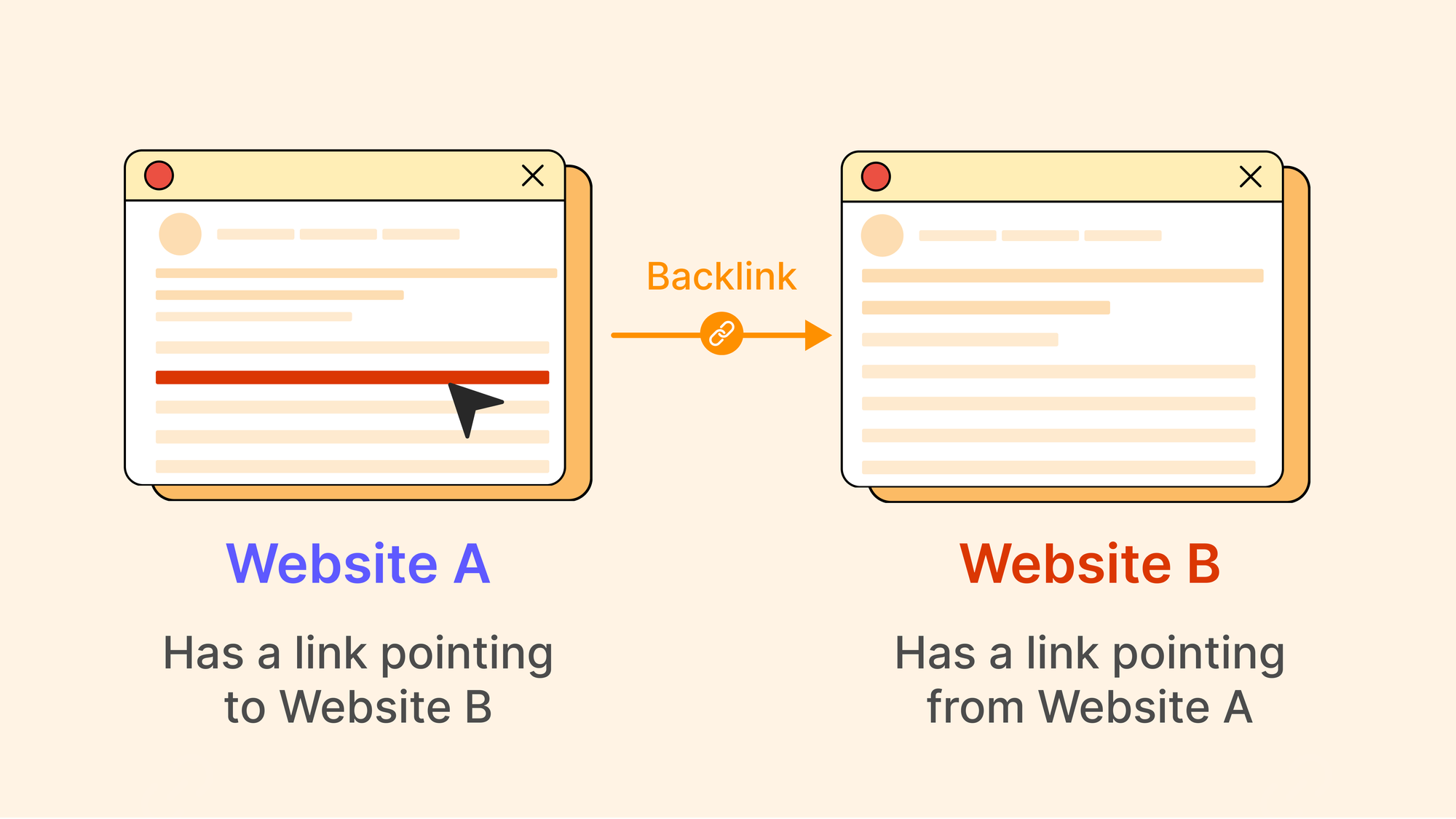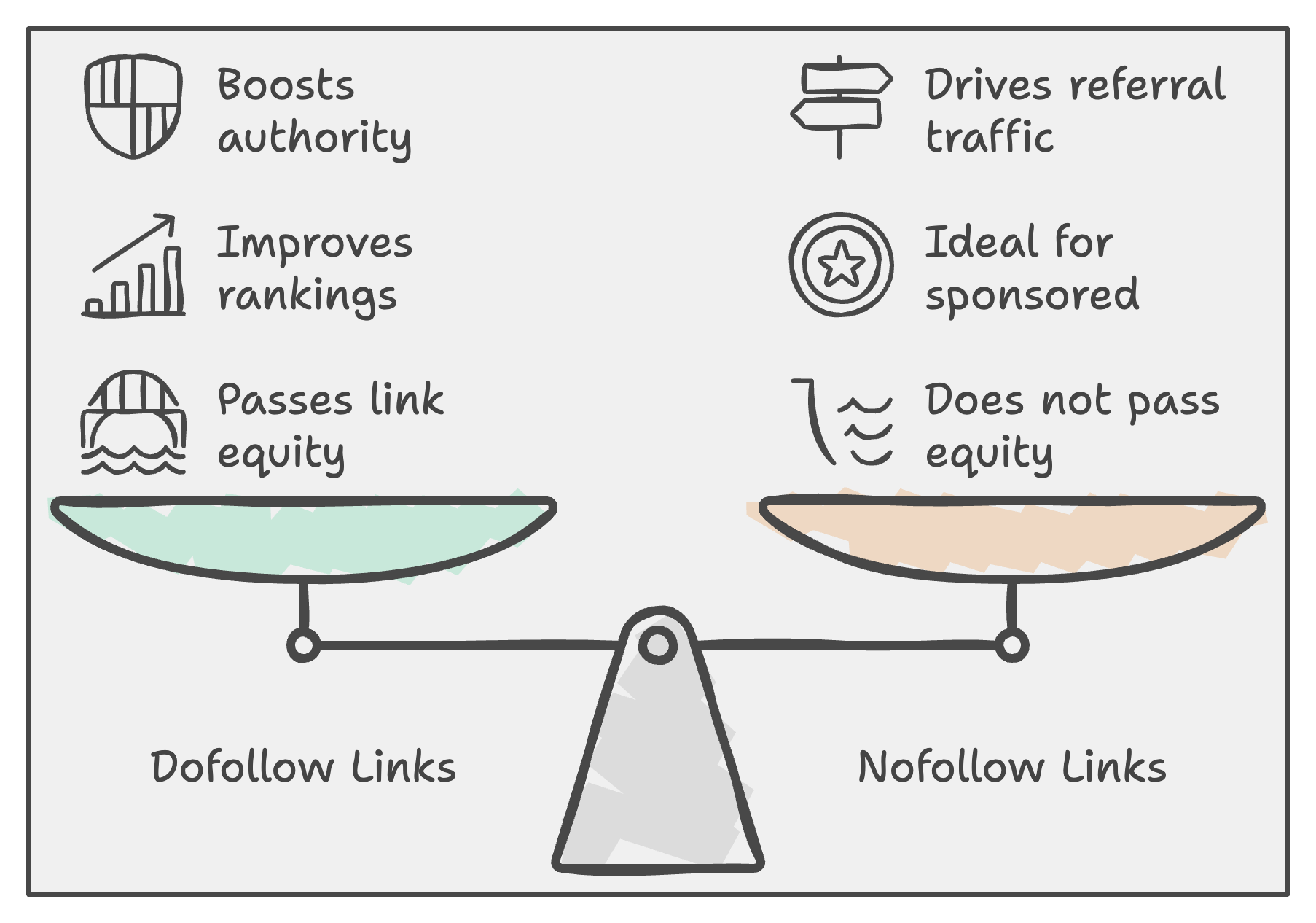Understanding Backlinks: A Complete Guide to Supercharge Your SEO Efforts

In the competitive landscape of SEO, backlinks remain one of the strongest factors in improving search engine rankings. Think of them as digital endorsements from one website to another, influencing search engine rankings. The more high-quality backlinks you accumulate, the more credible search engines perceive your site to be. In this guide, we'll dive deep into the intricacies of backlinks, their types, how you can leverage them to boost your site’s authority and traffic as well as learn actionable tips to improve your backlink strategy.
Introduction

If you’ve ventured into the world of search engine optimization (SEO), you’ve probably heard the buzz about backlinks. But what’s the big deal? Well, think of backlinks as digital endorsements—when one website links to another, it’s like giving a nod of approval. But they aren’t just digital nods from other sites—they’re major signals that search engines use to determine your website’s authority. However, it’s not as simple as collecting as many links as you can. Quality, context, and the types of links you attract play a massive role.
Notably, the quality of backlinks is paramount; high-quality links from authoritative sites can greatly enhance a website's ranking, while low-quality or manipulative backlink practices can lead to penalties from search engines like Google. The balance of dofollow and nofollow links is essential for a diverse backlink profile that improves overall SEO performance. Furthermore, the risks associated with poor backlink strategies underscore the importance of ethical link building and adherence to best practices in acquiring backlinks, ensuring long-term sustainability and suc- cess in digital marketing.
Navigating the backlink landscape might seem tricky, especially if you’re new to digital marketing. That’s where this guide comes in. We’re here to break things down and make backlinks feel a little less daunting. We’ll chat about what a backlink profile is, explore different types of backlinks, and clarify the difference between dofollow and nofollow links. Plus, we’ll dive into some important concepts like backlink equity and juice—yes, that’s a real thing!
Whether you’re just starting out or looking to sharpen your SEO skills, this guide is packed with insights and tips to help you make the most of your backlink strategy. So, grab a cup of coffee (or your favorite beverage), and let’s get started on unlocking the potential of backlinks for your website!
What is a Backlink Profile?
Your backlink profile is like a snapshot of your site’s relationship with the rest of the web. It includes all the links pointing to your site, and trust me, search engines pay close attention to it.
Why it matters: According to Moz, backlinks are the second most important ranking factor for Google, just behind content.
Authority Indicator:A strong backlink profile is a green flag for search engines, signaling that your content is trusted by others. It’s not just about how many backlinks you have; quality matters even more. Links from authoritative sites like .edu, .gov, or well-established industry leaders will significantly boost your site’s credibility.
“A healthy backlink profile signals that your site is a reliable source of information, which search engines use to boost your ranking,” says Brian Dean, founder of Backlinko.
Diversity Matters:Don’t put all your eggs in one basket. A diverse backlink profile—meaning links from a wide range of sites, industries, and content types—tells search engines your site is valuable in different contexts. If all your links come from one domain, it raises red flags with search engines.
Pro Tip: The age of your backlinks is an underrated factor. Older, established links often carry more weight than new ones. Over time, they build trust with search engines, reinforcing your site’s authority. Regularly auditing your backlink profile can help you identify aging links that still serve your site well and those that may need replacement.
Types of Backlinks
Backlinks can be classified into three main types, each playing a unique role in your SEO strategy:
- Natural Backlinks:These happen organically when someone finds your content valuable. You don’t have to ask for them—they’re a result of high-quality, informative content. For instance, if a renowned health magazine likes your content, they might link to your article on nutrition, it’s a powerful endorsement of your content and no outreach is needed.
- Manual Backlinks:These require outreach efforts, such as building relationships with bloggers or site owners to gain a mutual link. The manual backlinks may also be acquired by guest posting, influencer collaborations, or digital PR campaigns. For example, writing guest posts for relevant blogs often leads to manual backlinks. You can offer insightful content while earning links back to your site.
- Self-Created Backlinks:These are backlinks you create yourself, often through comments on forums, blog comments, guest blogs, or directory listings. While they can drive traffic, overuse may be viewed as spammy by search engines.
Pro Tip: Local backlinks are especially valuable for businesses looking to rank higher in local search results. Partnering with community organizations or sponsoring local events can help you gain these backlinks.
Dofollow vs. Nofollow Backlinks

Not all backlinks are created equal. Understanding the difference between dofollow and nofollow links is vital for optimizing your backlink strategy:
- Dofollow Links:Dofollow backlinks are the default type of hyperlink that passes authority and "link juice" from one website to another. These links do not contain any specific attributes in their HTML code, allowing search engines to follow them and impact rankings positively. When a site links to another without specifying the "rel=nofollow" attribute, it is considered a dofollow backlink, essentially endorsing the linked content. High-quality dofollow links from authoritative sites are invaluable for boosting your site's authority. For example, a dofollow link from a major publication like Forbes can skyrocket your rankings.
- Nofollow Links:In contrast, nofollow backlinks are links that include a "rel=nofollow" attribute, in- structing search engines not to follow the link. This means that nofollow links do not contribute to the linked page's ranking in search engines. While nofollow links don’t contribute to your site's authority in the same way, they can still drive traffic and enhance visibility. They often appear in user-generated content, such as comments or forums. For example, a popular social media post linking to your article may provide nofollow links, but can still lead to increased traffic and brand awareness. Please note that these don’t pass link juice, but they’re still important for driving traffic and brand exposure.
Pro Tip:The contextual placement of links matters more than the sheer number of links. A dofollow link embedded within relevant content is more beneficial than one placed in a sidebar. Search engines prioritize the context in which links are placed, so strategic positioning can enhance link.
Also, don’t ignore nofollow links. They might not pass link equity, but they can enhance your brand’s visibility and generate traffic from high-authority sites.
Backlink Equity and Juice
Backlink equity (or "link juice") refers to the value passed from one site to another through backlinks. The more authority a linking site has, the more "juice" your site receives. Here’s how it works:
- High-Quality Links:The authority of a backlink is a critical factor influencing its quality. This refers to the credibility and trustworthiness of the linking domain. High-quality backlinks typically originate from websites with strong metrics which indicate the site’s ranking strength and overall influence. Links from such authoritative, high-ranking domains carry more weight. According to a study by Ahrefs, 91% of all pages get no organic traffic from Google, often due to a lack of backlinks from authoritative sources. Hence, a single link from a trusted .edu or .gov site can outweigh several lower-quality links due to their credibility.
- Relevance Matters:When we talk about backlinks, relevance is a big deal! It’s not just about having any link pointing to your site; it’s about how closely that link aligns with your content. This is referred to as "topical relevance." For instance, if a website dedicated to guitar gear links to a guitar forum, that’s a perfect match! Search engines recognize this connection and see it as a strong endorsement of your site. The relevancy of the linking domain plays a crucial role in how much equity is transferred. The reason is that search engines prioritize relevancy; they know that links from related, authoritative sites are more likely to drive engaged, interested traffic to your content, strengthening your domain's authority within that specific field. But it doesn’t stop there. Context is key too. Sometimes, a link might come from a site that generally covers different topics, but if the link is placed within the right content context, it can still hold significant value. And let’s not forget about anchor text—the clickable part of a link! Choosing descriptive and relevant anchor text can enhance your link's authority and relevance. For example, if the anchor text says “best guitar tutorials,” it gives clear information about what users can expect when they click the link.
Pro Tip: The reciprocity of backlinks is often a missed opportunity. By linking to relevant sites in your content, you may encourage them to return the favor, creating a beneficial linking ecosystem. Building genuine relationships within your industry can foster these connections.
The Importance of Backlink Monitoring
After building a solid backlink profile, monitoring is key. SEO is not a one-and-done deal. Regularly check the quality and quantity of your backlinks to stay ahead of penalties and opportunities. This process involves tracking the links to your site and assessing their quality. Here are key reasons to stay vigilant:
- Detect Toxic Links:Low-quality or spammy backlinks can harm your site’s reputation and rankings. Regularly auditing your backlinks with tools like Ahrefs and Backlink Monitor helps you identify and disavow toxic links before they become an issue. “It’s not just about gaining links—it’s about gaining the right links. Monitoring your backlinks is crucial to staying ahead in SEO,” says Neil Patel, co-founder of Crazy Egg.
- Assess Impact:Understanding how new backlinks affect your rankings can inform your SEO strategy. Are certain links driving traffic or improving your authority? Imagine you recently acquired backlinks from two different sites: a popular fitness blog and a local news outlet. Using an analytics tool like Google Search Console or Ahrefs, you notice that the fitness blog link is driving significant traffic and improving your domain authority in the health niche, while the news link, despite being from a high-authority domain, has minimal impact on SEO. By analyzing this data, you can focus future efforts on acquiring similar industry-relevant backlinks to boost rankings more effectively. Assessing the impact of backlinks is important, because you can’t manage what you don’t measure!
- Growth Opportunities:Monitoring your competitor’s backlinks allows you to identify valuable linking opportunities and can offer valuable insights. According to a Moz study, 77% of digital marketers state that analyzing competitor backlinks is a crucial part of their SEO strategy. Monitoring competitor backlinks helps you identify high-authority websites that are already open to linking to content similar to yours. Neil Patel, suggests that competitor backlinks not only reveal link opportunities but also highlight potential content gaps, allowing you to build a stronger SEO strategy. By studying which sites are linking to your competitors, you can tailor your outreach efforts and create stronger pitches for those same valuable backlinks, improving your overall search engine visibility and ranking.
Pro Tip:Using advanced backlink monitoring tools like Backlink Monitor or Ahrefs can streamline the process. These tools automate much of the tracking, alerting you to new backlinks, potential issues, and opportunities for improvement.
Conclusion
And there you have it! Backlinks are more than just links; they’re essential components of your website’s SEO strategy and overall credibility. By understanding your backlink profile, recognizing the different types of backlinks, and knowing the distinction between dofollow and nofollow links, you're well on your way to building a robust online presence.
Don’t forget about backlink equity and juice—they’re the secret sauce that can elevate your site’s rankings in search results. With regular monitoring and a focus on acquiring high-quality backlinks, you can navigate the complex world of SEO with confidence.
Remember, SEO isn’t a sprint; it’s a marathon. The efforts you put into cultivating your backlinks will pay off in the long run. So, keep exploring, experimenting, and learning. Your website deserves the best, and a solid backlink strategy will help you reach your goals.
Thanks for joining us on this journey into the world of backlinks! If you have any questions or want to share your experiences, feel free to reach out. Happy backlinking!
